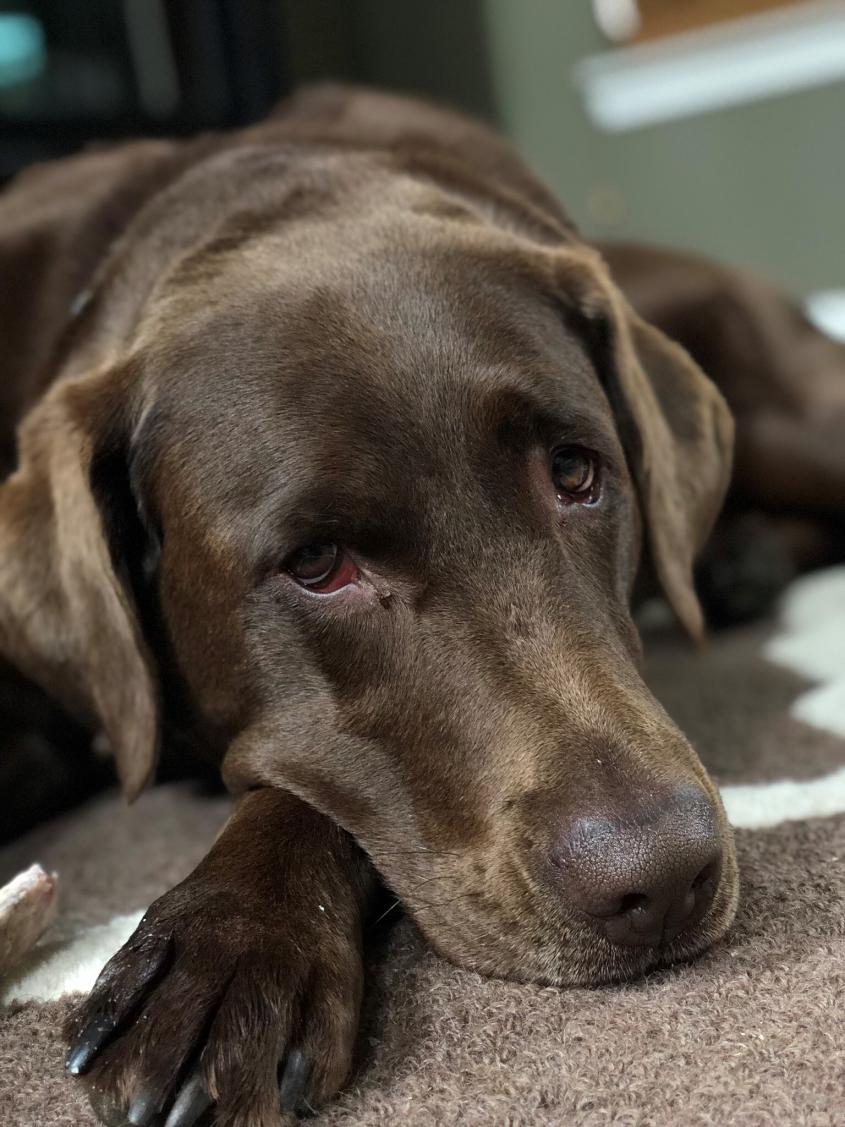Two orthopedic surgeries in two years return retriever to eight-mile hikes
Pinky TPLO patient.jpg

Pinky needed two orthopedic surgeries to get her walking normally again. Photo provided.
At three years old, Labrador Retriever “Pinky” Kramer experienced a waxing and waning lameness in her right leg over the course of about eight months. Her veterinarian at West Point Veterinary Clinic referred her to Cornell Orthopedic Services, where X-rays revealed bilateral cruciate disease in the stifle joints (equivalent to the knee in humans) and osteophytosis (bony remodeling). She had also torn her meniscus. This type of disease is common in dogs, particularly medium- and large-breeds like retrievers.
Dr. Ursula Krotscheck, chief of Small Animal Surgery at Cornell University Hospital for Animals, points out a ruptured cruciate is the most common reason dogs are referred to Cornell for orthopedic surgery. “If we see a large-breed dog with hind leg lameness this is usually the first suspicion,” she says.
Dogs may experience recurring lameness as the cruciate ligament slowly frays and then tears completely.
“For most dogs, a cruciate rupture is something we consider a surgical problem,” explains Krotscheck, adding: “When there is a complete tear of the cruciate, as in Pinky’s case, dogs may also tear their meniscus. This is extremely painful and owners will see the lameness worsen at that point.”
She urges owners to consult with an American College of Veterinary Surgeons (ACVS) Diplomate to determine the best treatment for their dog when diagnosed with this kind of injury.
To surgically repair Pinky’s stifle, she recommended Tibial Plateau Leveling Osteotomy (TPLO). TPLO changes the biomechanics of the knee to take away the need for the ligament. During the procedure, the tibia is cut and realigned with a plate so that it and the femur interact at 90 degrees rather than at an angle, making the stifle more stable.
“When they interact at an angle, the cranial cruciate ligament is responsible for stifle stability. A diseased or damaged ligament can’t maintain that,” says Krotscheck. “At 90 degrees, the bones exert equal and opposite force on each other and don’t need help from the ligament to stay that way.” Doctors also removed Pinky’s torn meniscus.
TPLO is the most commonly performed procedure nationally for cruciate disease. “It’s currently the accepted gold standard in treatment for this injury,” says Krotscheck, noting that’s due to the positive long-term outcomes. “It takes six months for the dog to completely recover, but they’re only restricted for eight to 12 weeks after the surgery.” The additional recovery time is needed for the muscle mass to return and for the leg to heal around the injury.

Families are provided with rehabilitation recommendations and exercises they can do at home, or can be referred to rehabilitation specialists such as Cornell’s Sports Medicine and Rehabilitation Service. Their team often works with orthopedic patients to help improve function and recovery after surgery.
In the first eight weeks following surgery, dogs are limited to leash walking only, without running, jumping or playing. If the dog is to be left unattended, he or she needs to be in a small, carpeted room or in a crate to avoid heavy activity or falling. Owners also must take precautions to avoid falls, such as placing runners on wood floors and using a sling to help catch the dog’s back legs if they should start to go out from under. Surgeons recheck the dog in eight weeks and, if all is well, will recommend a gradual return to normal activity over the next month. By 12 weeks, the dog is usually back to full activity and should be functioning normally, or near so, at six months.
Pinky’s owners Michael and Fran Kramer have never been through a major surgery with a pet before. They discussed the surgery with their children, including costs and expectations. “We all agreed she’s an important member of the family and needed the surgery to get better,” says Michael Kramer, adding they also chose to do the rehab at home as a family.
Krotscheck made the family aware that, as part of the disease process, more than half of the dogs who rupture one cruciate will do so in the other leg in approximately a year. When Pinky showed signs of lameness in her left leg less than a year later, the Kramers took her to Cornell where it was determined that she had in fact ruptured the cruciate. A second TPLO was performed with the same success as the first.
Now, at five years old and a little more than a year after her second surgery, Pinky is going on hikes of eight miles or more. “Every time we go hiking we think of Cornell and want to say ‘Thanks,’” says Kramer. “Everyone I met at the clinic is just great and it’s the best medical facility I’ve seen, human or animal.”
By Cynthia L. McVey




